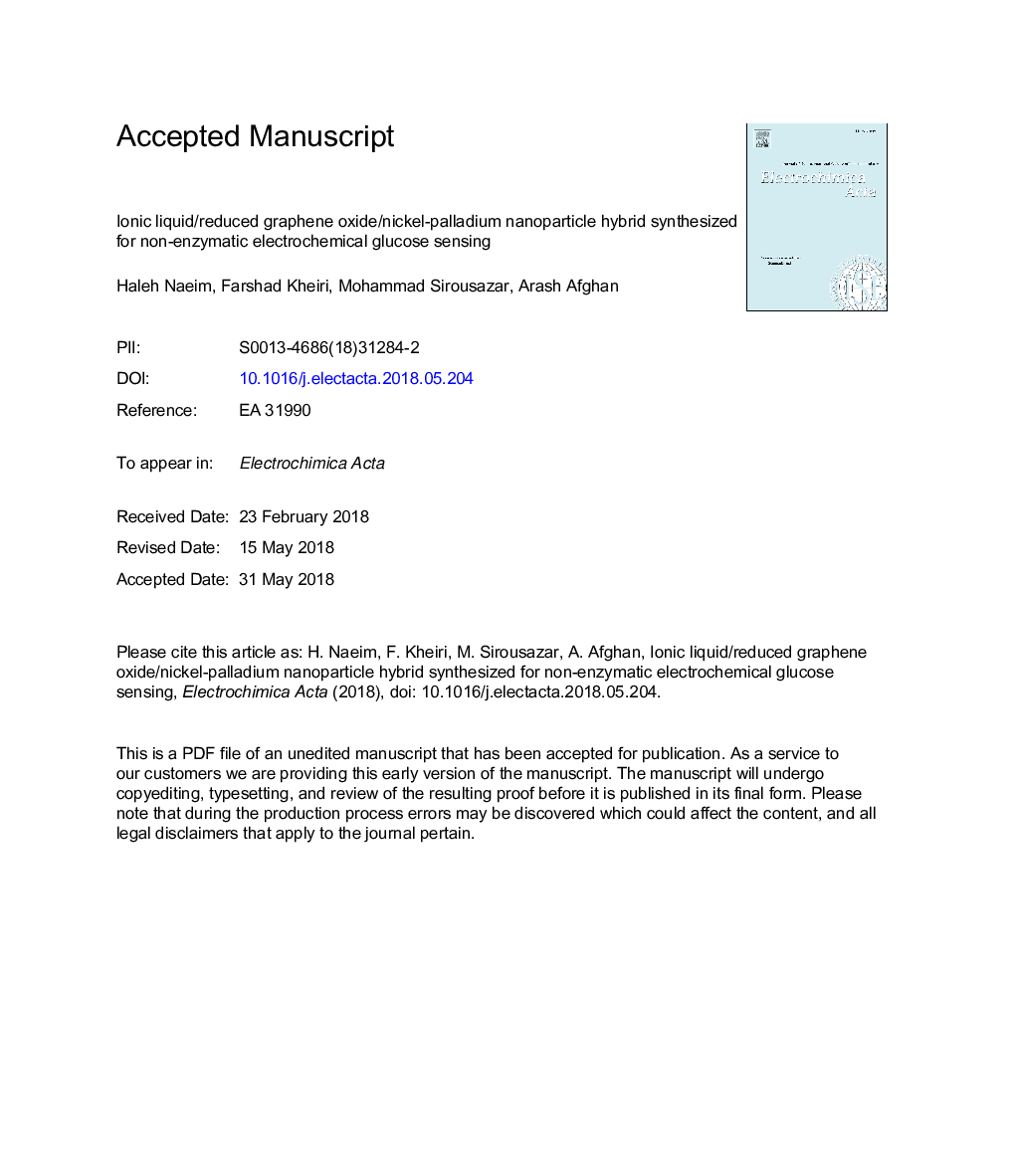| Article ID | Journal | Published Year | Pages | File Type |
|---|---|---|---|---|
| 6602138 | Electrochimica Acta | 2018 | 39 Pages |
Abstract
Ionic liquids (ILs) were synthesized for the purpose of graphene oxide modification through Ï-Ï bonding and anchoring highly dispersed bimetallic Ni-Pd nanoparticles on reduced graphene oxide (RGO). Metallic ions (Pd2+ and Ni2+) were initially attached to an ionic liquid and graphene oxide composite. The ionic liquid served as a stabilizer following metal ions and graphene oxide sheets reduction by NaBH4, which produced an IL/RGO/Ni-Pd hybrid. The Ï-Ï interaction between the synthesized ionic liquid and graphene oxide was characterized by nuclear magnetic resonance spectroscopy (1H NMR), Fourier transform infrared spectroscopy (FTIR), and ultraviolet-visible spectroscopy (UV-vis). The result of transmission electron microscopy (TEM) demonstrated Ni-Pd NPs (3-5â¯nm in size) were uniformly dispersed on the IL/RGO composite. Electrochemical measurements revealed IL/RGO/Ni-Pd modified glassy carbon electrodes directly catalyzed glucose oxidation and displayed enhanced current response compared with RGO/Ni-Pd including a response time within 3â¯s, a linear range from 0.2â¯Î¼M to 10â¯mM, good reproducibility, considerable stability, and excellent anti-interference to electro-active molecules. The superior catalytic activity and selectivity make the IL/RGO/Ni-Pd hybrid a promising nanomaterial for applications in direct detection of glucose.
Keywords
Related Topics
Physical Sciences and Engineering
Chemical Engineering
Chemical Engineering (General)
Authors
Haleh Naeim, Farshad Kheiri, Mohammad Sirousazar, Arash Afghan,
